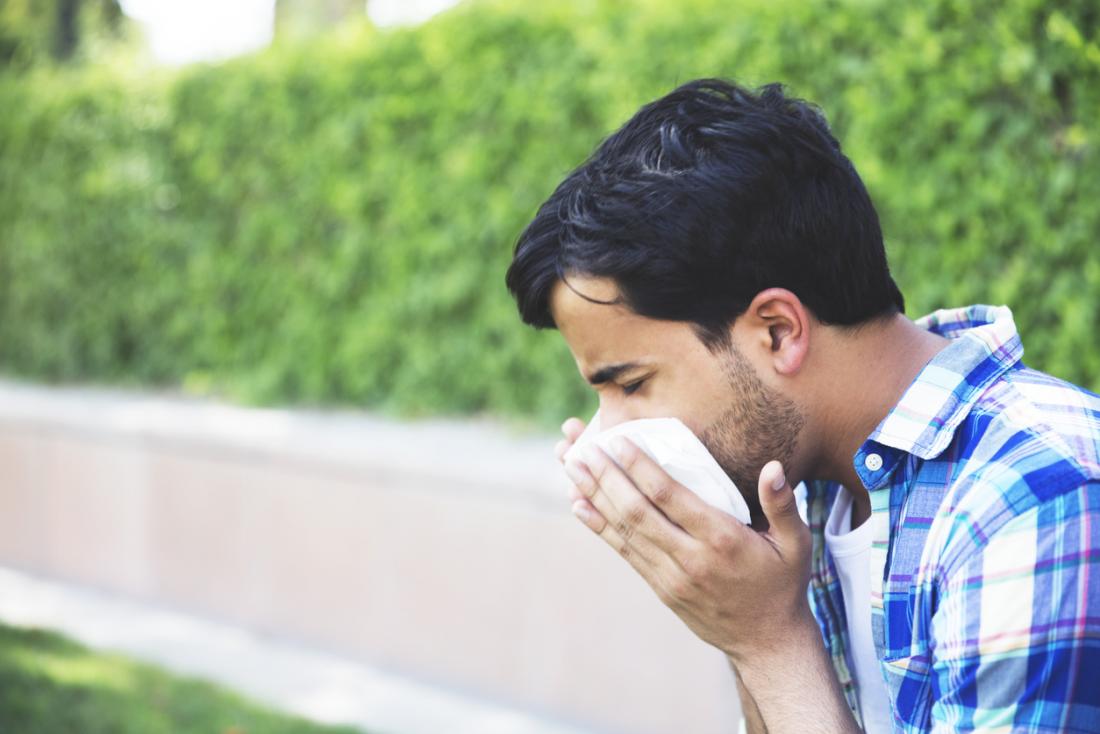How To Fix Nasal Drip
We include products we think are useful for our readers. If you buy through links on this page, we may earn a small commission. Here's our process.
Postnasal drip is extra mucus felt in the back of the nose and throat caused by the glands in these areas. People with postnasal drip usually feel they have to clear their throat more than normal.
The excess mucus can also cause some other symptoms.
There are many home remedies to treat postnasal drip, though sometimes a visit to the doctor is necessary.

Postnasal drip is when the sensation of mucus buildup at the back of the throat causes discomfort.
The nose, throat, and sinuses are all constantly producing mucus. Mucus is a thick and slippery substance that helps to keep the airways from drying out throughout the day.
The air people breathe is full of germs, pollen, and other environmental pollutants. When the air enters the body, these particles can create problems if they are not filtered out. It is the job of mucus to trap these foreign bodies and help eliminate them.
Mucus usually goes unnoticed. It harmlessly mixes with saliva throughout the day and is swallowed or blown from the nose. However, if the body produces too much mucus, it becomes much more noticeable.
When this happens, a person may feel mucus dripping down the back of their throat. This is what is known as postnasal drip.
In addition to the sensation of mucus dripping down the back of the throat, symptoms of postnasal drip include:
- sore or scratchy throat
- feelings of nausea caused by extra mucus in the stomach
- frequently clearing the throat
- excessive spitting up or swallowing mucus
- foul breath
- a cough that gets worse at night

Postnasal drip is commonly caused by allergies such as hayfever.
Postnasal drip is usually caused by certain changes in the environment or the body.
One of the most common causes of postnasal drip is an allergy. Seasonal allergies caused by plants releasing their pollen may cause trigger postnasal drip, as the body produces extra mucus to try and eliminate the pollen spores.
Cold weather or dry air can also cause postnasal drip. Breathing cold or dry air may irritate a person's nose and throat, so their body will create mucus to humidify and warm the passages and ease this irritation.
Cold weather is also associated with viral infections, such as the flu, sinus infections, and the common cold. These infections cause many symptoms, including postnasal drip.
The body reacts to any invading germs by creating more mucus to flush them out. It may be uncomfortable, but it is actually the sign of the body working to stay healthy.
Other causes of postnasal drip include:
- eating overly spicy food
- pregnancy
- objects stuck in the nose
- irritating chemicals from perfumes, cleaning products, or environmental fumes
- smoke
- medications, including birth control and blood pressure medications
- chronic respiratory conditions, such as COPD
A deviated septum, which occurs when the nasal septum (the wall between the nostrils) is crooked or damaged, can make it difficult for the body to drain mucus correctly. This may cause postnasal drip.
Most cases of postnasal drip clear up on their own. However, depending on its cause, complications can arise if postnasal drip is left untreated. There is a chance for infection if germs get in and cause the excess mucus to clog up the sinuses or Eustachian tube, which is the canal that connects the throat to the middle ear.
It is best to treat postnasal drip early to avoid complications, and people should see a doctor for any symptoms that last for more than 10 days.
There are remedies available to treat postnasal drip, including:
Drying out the mucus
Over-the-counter decongestant medications such as phenylephrine (Sudafed PE Congestion) and pseudoephedrine (Sudafed) can help dry out the mucus. This works for many people but may not be right for everyone.
These medications can dry out the mucus, and some people may find that their nose feels too dry. Others find these medications make them feel nervous or dizzy and may avoid them for this reason.
Newer drugs, such as loratadine (Claritin) and cetirizine (Zyrtec) are called non-sedating antihistamines, meaning they are less likely to cause fatigue. This is especially beneficial for people who have to work or drive while dealing with postnasal drip.
Additional over-the-counter non-sedating antihistamine options include fexofenadine (Allegra) and levocetirizine (Xyzal).
Each of these medications comes with side effects and may interact with other medicines. A person should discuss new medications with a doctor or pharmacist before trying them.
Thinning the mucus
Another home remedy for postnasal drip involves thinning the mucus out. There are over-the-counter medications for this, such as guaifenesin (Mucinex), but there are also some non-chemical options.
Increasing the moisture in the air may help make postnasal drip thinner and allow it to move smoothly through the passageways. Using humidifiers or steam vaporizers may help relieve postnasal drip, especially if it associated with clogged sinuses.
Using nasal sprays
Saline nasal sprays or irrigation pots use salt water to flush out the mucus buildup. These options may help clear blocked airways and reduce overall mucus content.

If the symptoms of a postnasal drip get worse at night, elevating the head while sleeping may help.
A person can also try using home remedies to treat postnasal drip. These include:
Propping up the head
If the mucus buildup gets worse at night, people may find it helps to sleep with their head slightly higher than the rest of their body.
Propping a couple of pillows under the head and shoulders promotes drainage and reduces the amount of mucus a person feels in their throat and airways.
Drinking fluids
The body also loses water through a postnasal drip. Drinking plenty of liquids can help to thin mucus, keep the mucus flowing smoothly, and prevent dehydration.
Warm teas and broths may also provide relief from other symptoms, such as a sore throat, and the steam may help clear the sinuses.
A person with discolored mucus that does not clear up should see a doctor, as this can be a sign of a bacterial or viral infection. A person with a postnasal drip caused by a bacterial infection may require antibiotics. Infections caused by a virus will not be treated with antibiotics, however.
Anyone who experiences foul smelling mucus or symptoms accompanied by a significant fever should see their doctor for a proper diagnosis. Also, people who have been experiencing symptoms of postnasal drip for 10 days or more should see a doctor for a diagnosis.
Doctors may order additional tests to check for other causes such as stomach acid reflux. They may also prescribe a steroid nasal spray for people who suffer from persistent allergies.
How To Fix Nasal Drip
Source: https://www.medicalnewstoday.com/articles/319636
Posted by: wilkersonpeding.blogspot.com

0 Response to "How To Fix Nasal Drip"
Post a Comment